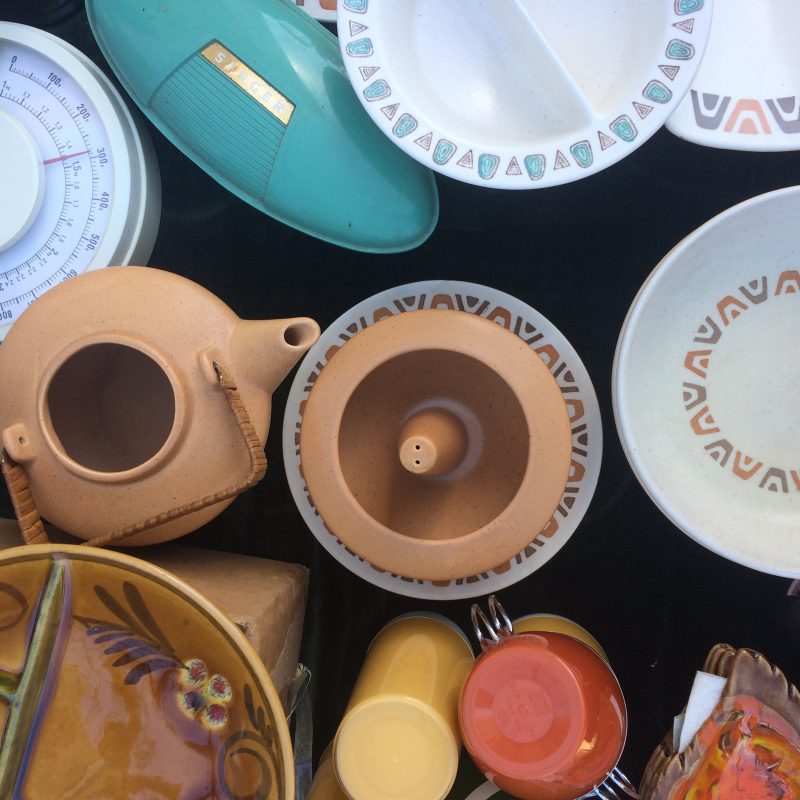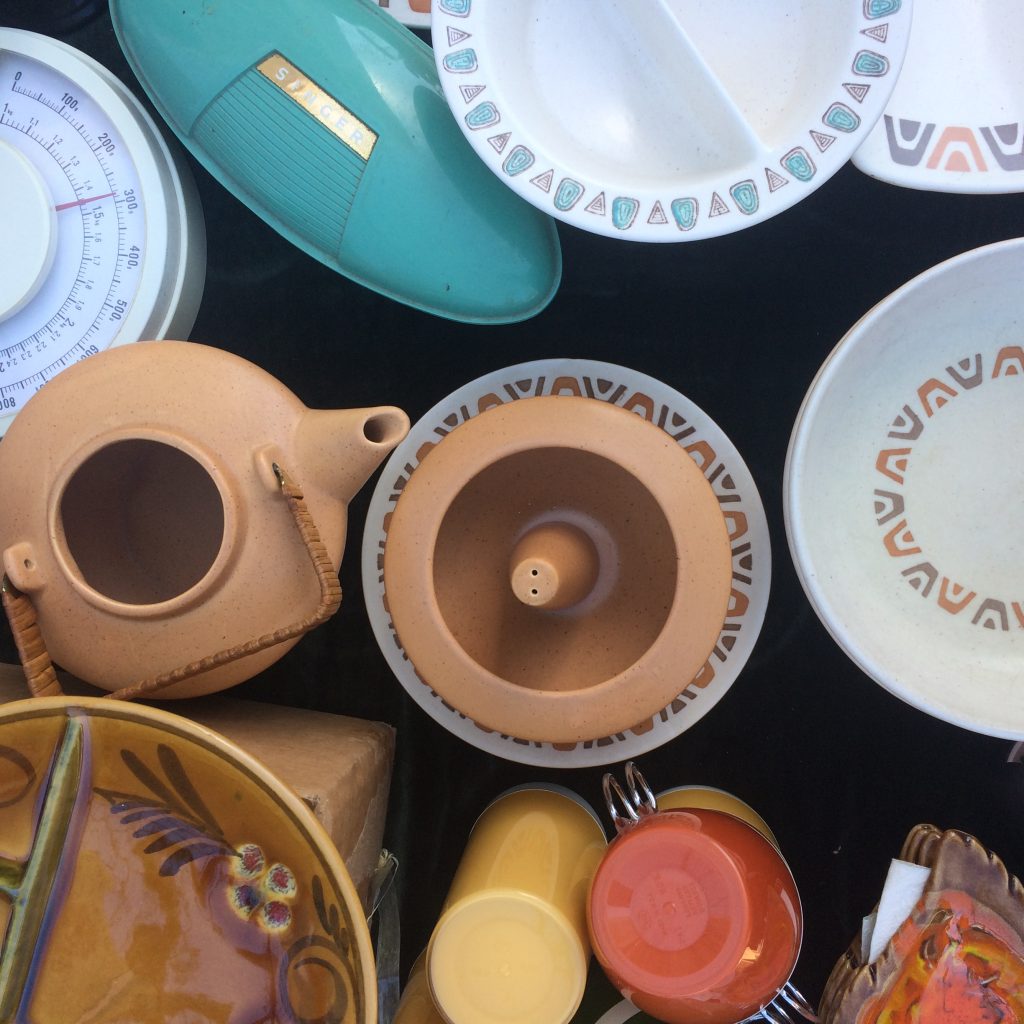Wait! Did you miss part one of our flea market series?
Whatever flea market you visit, keep these six helpful hints in mind to score deals and have a great time.
1. Do Your Research
Someone who knows what they’ve got will always charge more for it than a vendor who hasn’t done their research. Also, if you don’t know what you’re looking at, you won’t have the information you need to understand an item’s pricing or if the price matches the item’s actual value. Your smartphone is an excellent tool for a quick and covert internet search, but studying ahead of time will help you differentiate a dud from a deal.
2. The Early Bird Gets the Edward Wormley
At monthly markets, sellers will set up before the sun rises and the serious shoppers come soon after. Those passionate enough to arrive, coffee in hand, before the rest of the world wakes up are rewarded with the first pick. This is especially important with larger pieces, as furniture tends to go quickly.
Morning shoppers will not get the best prices possible, but these prices are generally better than those in galleries or antiques stores. It’s actually when buyers for such stores are shopping for their shops! Early admission costs more than general admission but the price is negligible if you’re after a big-ticket item.
Wheeling and dealing picks up in the early afternoon when formerly firm prices soften at the prospect of items being packed up again. The hour before closing is the best time to get bargains and plenty of treasures will be yours for the taking.
3. Consider the Weather
Comfortable shoes, layered clothing, sunglasses and a hat are the unofficial flea market uniform during warmer months.
Most markets will advertise that they are open “rain or shine,” but the truth is that shoppers and vendors will want to avoid the misery that comes with squishy shoes and water-soiled merchandise. Sudden showers, however, do not deter frugal vintage enthusiasts, because they know that fewer shoppers means lower prices. Whatever the weather, dress in clothing that you don’t mind getting grungy and doesn’t look expensive. Vendors are more likely to accept your offers if you don’t appear to be the kind of person for whom money is no object.
4. Be Prepared
Experienced shoppers bring foldable wheeled wire carts to haul their new possessions, but a large and sturdy tote will also get you through the day. Be sure to pack water, a measuring tape, notebook, and snacks that will keep you energized through rows of faux French white-painted furniture. Grab a market map if they’re offered or check online and take a mental snapshot of the layout. Some markets are organized based on what the vendors are selling, which means you can skip right ahead to the stuff you came to see.
5. Cash is King
With the advent of mobile POS systems like the Apple Square, more vendors are equipped to process credit or debit card sales for the convenience of their customers. But if you’ve got cash to work with, these vendors can offer you better prices because they don’t have to pay charges to a third party. Many vendors will only accept cash and refuse to accept checks as well.
Plan to bring a good mix of smaller bills as well so you can give exact change after negotiating a price that doesn’t end in zero. Dealers will find it rude if a price is lowered from $15 to $12 after negotiating and $15 is handed over to be changed. You also run the risk of the dealer not having the right cash for the difference.
6. Check Condition
Do you want to take on a restoration project? This is where the majority of bargains are found, and some carefully applied elbow grease will take that diamond right out of the rough. Know your limits of the restoration budget and your own DIY skills.
Warping wood or peeling veneer are signs of water or damage, check legs for evidence of termites and give the piece a good sniff. Mold and mildew are dangerous to bring into your home and, if the item smells like smoke, one of the only ways to eliminate the stench is with an odor-blocking primer, but that also means covering the wood grain with paint.
Unless you have prior experience with upholstery, it’s usually best to leave these projects up to the professionals. If you fall in love with a sleek sectional with good bones that sags slightly in the middle, add the cost of getting it done correctly to the vender’s asking price before you jump in.
Want more flea market goodness? Be sure to read part one of our flea market series, plus a roundup of events!













